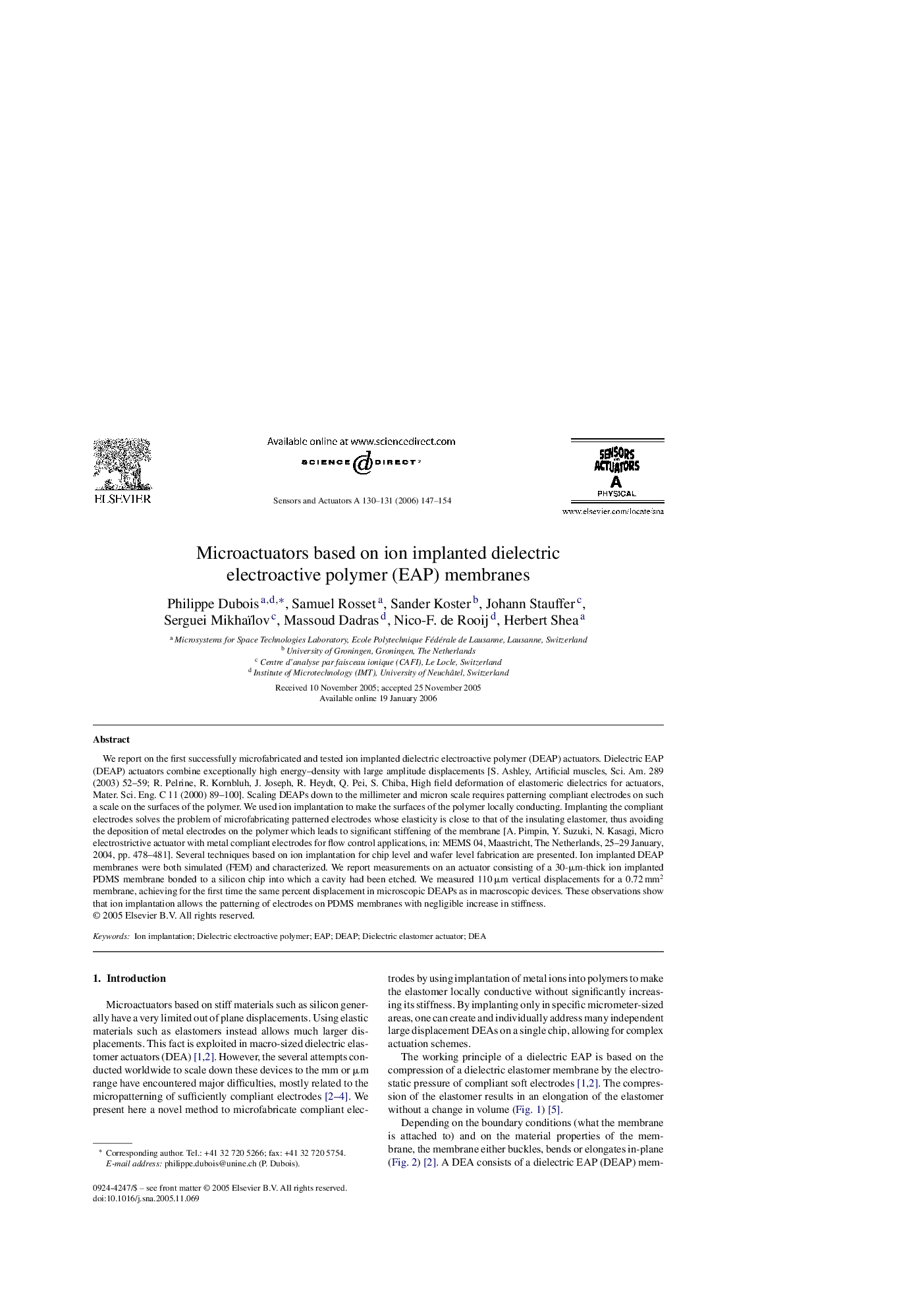| Article ID | Journal | Published Year | Pages | File Type |
|---|---|---|---|---|
| 750121 | Sensors and Actuators A: Physical | 2006 | 8 Pages |
We report on the first successfully microfabricated and tested ion implanted dielectric electroactive polymer (DEAP) actuators. Dielectric EAP (DEAP) actuators combine exceptionally high energy–density with large amplitude displacements [S. Ashley, Artificial muscles, Sci. Am. 289 (2003) 52–59; R. Pelrine, R. Kornbluh, J. Joseph, R. Heydt, Q. Pei, S. Chiba, High field deformation of elastomeric dielectrics for actuators, Mater. Sci. Eng. C 11 (2000) 89–100]. Scaling DEAPs down to the millimeter and micron scale requires patterning compliant electrodes on such a scale on the surfaces of the polymer. We used ion implantation to make the surfaces of the polymer locally conducting. Implanting the compliant electrodes solves the problem of microfabricating patterned electrodes whose elasticity is close to that of the insulating elastomer, thus avoiding the deposition of metal electrodes on the polymer which leads to significant stiffening of the membrane [A. Pimpin, Y. Suzuki, N. Kasagi, Micro electrostrictive actuator with metal compliant electrodes for flow control applications, in: MEMS 04, Maastricht, The Netherlands, 25–29 January, 2004, pp. 478–481]. Several techniques based on ion implantation for chip level and wafer level fabrication are presented. Ion implanted DEAP membranes were both simulated (FEM) and characterized. We report measurements on an actuator consisting of a 30-μm-thick ion implanted PDMS membrane bonded to a silicon chip into which a cavity had been etched. We measured 110 μm vertical displacements for a 0.72 mm2 membrane, achieving for the first time the same percent displacement in microscopic DEAPs as in macroscopic devices. These observations show that ion implantation allows the patterning of electrodes on PDMS membranes with negligible increase in stiffness.
